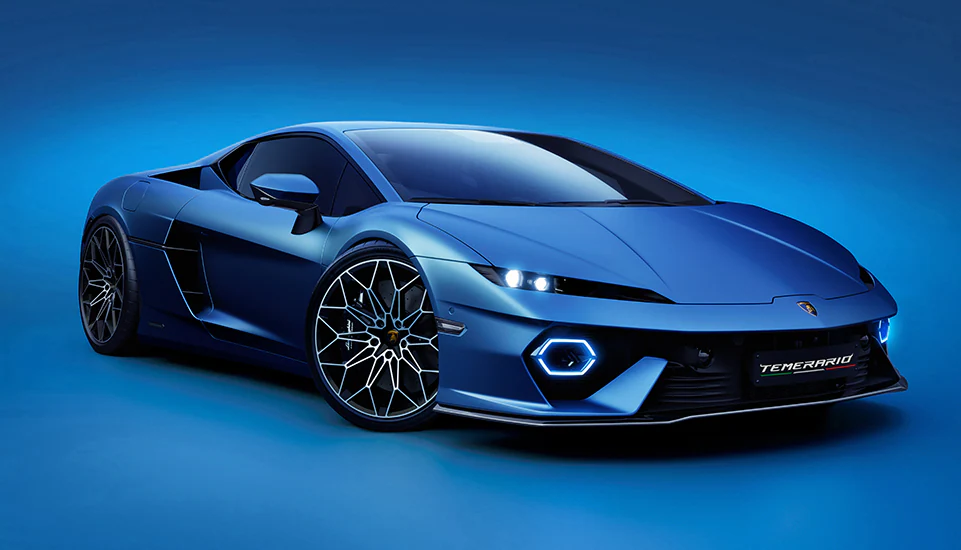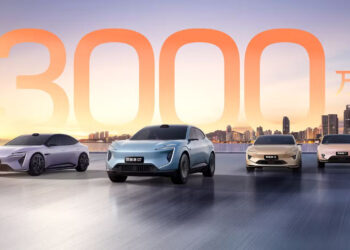Federico Foschini is a man who knows how to sell a dream. Lamborghini’s Chief Marketing and Sales Officer is on a mission to convince enthusiasts that the brand’s latest creation, the Temerario, is not just a replacement for the Huracan—it’s a revolution. When asked whether fans will miss the Huracan’s V-10, Foschini’s response was emphatic: “It’s not V-10 to V-8, it’s 10 to 10,000.” He’s referring to the Temerario’s 10,000 rpm redline, a figure that underscores Lamborghini’s commitment to pushing boundaries, even as they transition to a V-8 powerplant.
The Temerario’s new twin-turbo V-8 may lose two cylinders compared to the Huracan, but it gains in nearly every other way. Lamborghini has built this engine from the ground up, ensuring that it stands apart from anything else on the market—including Audi’s V-8 offerings. “There is no other engine with these kinds of characteristics,” Foschini proudly states. This isn’t just a standard V-8 bi-turbo; it’s a 789-horsepower masterpiece that climbs to 920 horsepower when paired with its hybrid assist. The result? A car that’s knocking on the door of hypercar territory while retaining the soul of a Lamborghini.
Unlike the Huracan, the Temerario’s powertrain is entirely bespoke. The engine features a 90-degree “Hot Vee” layout, a flat-plane crankshaft, and twin turbochargers generating 36 psi of boost. Lightweight materials like aluminum-alloy cylinder heads and titanium connecting rods ensure the engine remains agile despite its power, while advanced tech like Diamond-Like Carbon (DLC) coated finger followers maintain reliability at high RPMs. This attention to detail allows the V-8 to deliver a robust 197 horsepower per liter—a figure that even the most discerning gearhead can’t ignore.
But it’s not just about power. Foschini is confident that the Temerario offers a distinct driving experience compared to the Revuelto, Lamborghini’s V-12 hybrid hypercar. Despite their proximity in horsepower, with the Revuelto edging out the Temerario by 81 horsepower, Foschini emphasizes that these cars cater to different needs. The Temerario, with its smaller, more versatile frame and sharper handling, is designed to be as thrilling on a twisty backroad as it is on a track. “They are answering to different needs, and it’s clear that many customers are going to buy both,” Foschini remarks, highlighting Lamborghini’s strategy of offering distinct yet complementary experiences.
The shift to electrification is another milestone for Lamborghini. With the Revuelto, Urus, and now the Temerario, the brand’s entire lineup is hybridized. But this hasn’t come without challenges. The addition of batteries inevitably increases weight—a common enemy in performance cars. Yet Lamborghini has tackled this head-on by cleverly integrating the battery into the center tunnel, keeping the car’s center of gravity low and maintaining a balanced, agile chassis. Even at 3,725 pounds, the Temerario is poised to outperform the Huracan on the track, thanks to its advanced torque vectoring system and dual front motors.
While the Huracan and Gallardo were icons in their time, the Temerario is set to surpass them, both in performance and exclusivity. Lamborghini isn’t aiming to flood the market; they’re focusing on maintaining exclusivity and high residual values, ensuring that each Temerario remains a prized possession.
Set to hit the market early next year, the Temerario is expected to carry a price tag in the $400,000 range, slightly higher than the outgoing Huracan. Whether fans will embrace the V-8 is yet to be seen, but with its bespoke engine, staggering power, and electrified precision, the Temerario is likely to become a modern classic in its own right. Lamborghini’s latest offering isn’t just a new car—it’s a bold statement that the future of supercars is as thrilling and exclusive as ever.










